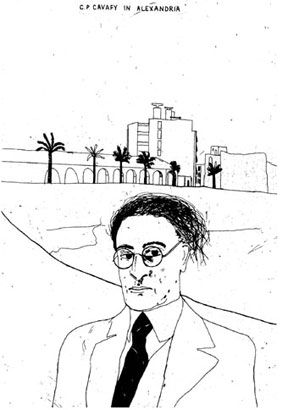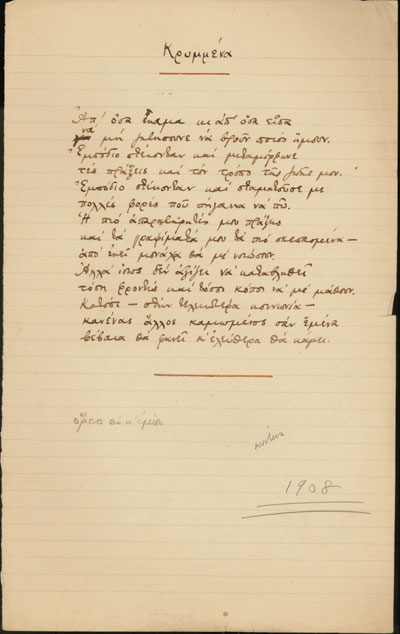 |
||||||||||
|
|
||||||||||
|
|
||||||||||
HIDDEN THINGS
On the surface, the artist and the poet seem an unlikely pair. A flamboyant and colorful personality, Hockney is known for his whimsical and often bold images. Cavafy, who died four years before Hockney was born, is remembered as a quiet, erudite, and introspective poet, whose works are not particularly painterly. Moreover, Cavafy was a homosexual who lived during a time when he was forced to hide his behavior, while Hockney lives openly as a gay artist. Despite these differences, Hockney was clearly moved by the poet’s life and work. Much of Cavafy’s adult life was spent in Alexandria, Egypt, where he fled the decency, order, and claustrophobia of the city’s “good quarter” to enjoy the squalor and excitement of homosexual encounters in the shops and bars of its “bad quarter.” His poems often underscore the sensual, almost intoxicating power of those memories. The love affairs are, however, usually tainted with tragedy, depicted as fleeting, and eclipsed by a sense that they are “condemned” by society. For Cavafy, memory became the antidote for those fading pleasures, no matter how transient. David Hockney’s homage to Cavafy in the form of a book stands as one of the most unusual “translations” of these emotive poems. In the early 1960s, when Hockney first discovered Cavafy’s poems, he was so taken by them that he stole the only copy of the then out-of-print translations from his local library and read the poems repeatedly. According to Hockney, he still owns the book and remembers with a note of irony that it was considered “too wicked” to remain on the library shelf for the casual peruser. One had to ask specially for it from the librarian. The sparing lines employed by Hockney in this series of etchings echo the economy of Cavafy’s poetic style, and like the figures in Cavafy’s verse, Hockney’s men are drawn with simplicity and tenderness, subtly but never explicitly erotic.
|
||||||||||

